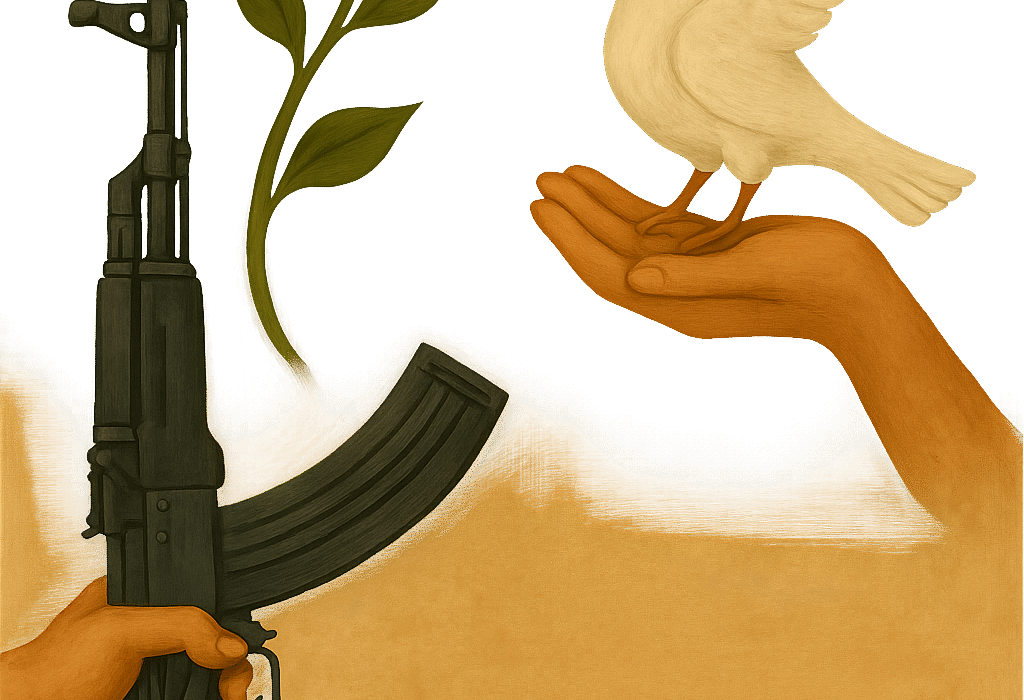by Turan Rzayev
After 41 years of armed conflict, the PKK (Kurdistan Workers’ Party) has begun laying down its arms. The first phase of the process took place in the Dukan district of Sulaymaniyah, Iraq, where a group of 30 PKK militants surrendered their weapons. The second phase is expected to commence in the coming days.
The entire disarmament process, expected to be completed within three to four months, is being conducted under the supervision of the Turkish Armed Forces and the National Intelligence Organization (MIT). The collected weapons will be destroyed through special procedures and will not be transferred to third countries. Simultaneously, logistical centers used by the organization will be dismantled. As the process progresses, militant camps will be evacuated. Individuals not involved in criminal activities will be allowed to return to Turkey without any charges being pressed against them.
Undoubtedly, the disarmament and surrender of the PKK represent a positive, even historic, development. It could be considered one of the greatest victories in modern Turkish history. However, the rapid pace at which this process is unfolding raises concerns. It is questionable that an organization that has relied on extreme violence, inhumane treatment, and psychological warfare for over four decades is now engaging in such a swift surrender.
This decision has inspired hope among some political circles within Turkey, nurturing the belief that a “terror-free Turkey” may finally become a reality. Yet, this development requires a more nuanced and in-depth analysis. The context, timing, content, and potential consequences of the PKK’s decision suggest that this is neither a definitive end nor a true surrender. On the contrary, it may mark the beginning of a new phase for the organization.
The prominent reappearance of Abdullah Öcalan, the founder of the PKK, could be intended to provoke emotional reactions within Turkish society and possibly lay the groundwork for his future release. Some speculate that the long-term goal of this move is to reintegrate Öcalan into the political sphere. Although this scenario currently seems improbable, the fact that Öcalan is being brought back into public discourse cannot be regarded as coincidental.
The PKK’s evolution since the 1980s shows that it has never been limited to armed struggle alone. Over time, the organization has adapted its tactics and structure in response to changing circumstances, transforming into a more complex and flexible entity. Calls for peace, ceasefires, and disarmament—such as those made in 1993, 1999, 2009, 2013, and 2015—have consistently served tactical purposes. While concrete steps are being taken this time, they appear to reflect a strategic shift towards political-ideological engagement rather than a true renunciation of violence.
The PKK has been rebuilding itself ideologically and politically. The organization actively engages in propaganda among youth, infiltrates intellectual circles, and seeks influence in media and academia. It is crucial to remember that the PKK’s threat extends beyond terrorism—it also encompasses ideological manipulation. The group may relinquish arms, but it has not abandoned its ideas.
Its activities in Syria and Iraq are also part of this transformation. Operating under the names PYD/YPG in Syria, the PKK’s affiliates have achieved de facto autonomy with overt and covert support from the US and other Western powers. Despite the regime changes in Syria, the YPG has not been disarmed and has only strengthened its political and administrative structures. In northern Iraq, the influence of the Talabani and Barzani factions persists. The Talabani faction alone could facilitate the PKK’s potential rearmament.
Iran also plays a significant role. The PKK’s Iranian wing, PJAK, although occasionally pressured by Tehran, is often used as a strategic tool by the Iranian regime to maintain the regional balance of power. Iran utilizes PJAK both against Turkey and the Kurdistan Region of Iraq, indicating that the PKK’s operational scope has expanded and become more multi-vectoral.
Domestic political dynamics in Turkey are another crucial factor. The HDP and its legal successor, the DEM Party, serve as political channels for the PKK’s agenda in the Turkish parliament. Through these parties, the PKK attempts to normalize its presence within Turkish society. However, the core issue is not political activity but ideological influence. This influence is cultivated in the minds of youth, university classrooms, media platforms, and social networks. The PKK may put down weapons, but it continues to fight an intellectual and ideological war. This is the real danger.
Turkey’s institutional response to this ideological warfare remains fragmented. The presence of individuals within political institutions, media, and even security agencies who sympathize with or tactically cooperate with the PKK complicates efforts to combat the organization effectively.
The post-Erdoğan era in Turkey could pose even greater risks in this context. While the current political leadership maintains certain red lines, a future political vacuum or power shift could embolden the PKK to act more assertively on the political front. This would render the narrative of the PKK’s dissolution meaningless.

